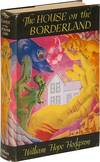

Stock Photo: Cover May Be Different
The Mirror of the Gods. How Renaissance Artists Rediscoverd the Pagan Gods.
by BULL, M.,
- Used
- Condition
- See description
- ISBN 10
- 0195219236
- ISBN 13
- 9780195219234
- Seller
-
Aalten, Netherlands
Payment Methods Accepted
About This Item
Oxford University Press, Oxford (...), 2005. XI,465p. Richly ills.(B&W and some full-colour pictures). Hard bound. ?This book is most valuable for its overview of a vast field - the reception of classical mythology throughout European art and literature from the fourteenth through the seventeenth centuries. It surveys the literary sources that spurred the revival of interest in the pagan gods and categories the types of artistic objects - domestic furnishings, painting, sculpture, prints, tapestries, manuscripts, and majolica - where their images appeared. Bull conclues that Hercules, Jupiter, Venus, Bacchus, Diana, and Apollo were the most frequently depicted, and accordingly devotes a chapter to each. The final chapter analyses the selection pattern attributing it to individual choices of patrons interested in astrology, and hence planetary deities, and in subject matter involving amorous encounters or exotic animals. The epilogue explains the thematic distribution in terms os mythology supplying what Christianity eschewed, an imagery of sexuality, fertility and secular power. (?) His large scope allows Bill to make a number of interesting general observations. He frames his remarks about mythological art in the Renaissance and Baroque periods by contrast with its Greco-roman origins to underscore the very different circumstances in the later epoch, where no one believed in the pagan gods and very little precise information survived about their imagery?s ritual use and display. (?) Bull contends that mythological visual imagery appeared mostly in what he characterises as secondary locations: domestic furnishings such as marriage chests, majolica, birth trays, and small boxes for jewellery and other precious objects, temporary decorations for festivals or triumphal entries, prints, and sculptures for fountains and gardens. (?) Readers will profit from the separate analyses of the six deities most favoured in European iconography ca. 1400-1700 and the summaries by their myths? literary sources. Everyone will enjoy his lively writing and the accompanying abundant, if poor quality, illustrations, but scholars will be frustrated by the sparse endnotes.? (SARAH BLAKE McHAM in Renaissance Quarterly, 2006, pp.239-241).
Reviews
(Log in or Create an Account first!)
Details
- Bookseller
- Scrinium Classical Antiquity
(NL)
- Bookseller's Inventory #
- 59883
- Title
- The Mirror of the Gods. How Renaissance Artists Rediscoverd the Pagan Gods.
- Author
- BULL, M.,
- Book Condition
- Used
- Quantity Available
- 1
- Binding
- Hardcover
- ISBN 10
- 0195219236
- ISBN 13
- 9780195219234
- Publisher
- Oxford University Press, USA
- Place of Publication
- Oxford
- This edition first published
- January 10, 2005
Terms of Sale
Scrinium Classical Antiquity
30 day return guarantee, with full refund including original shipping costs for up to 30 days after delivery if an item arrives misdescribed or damaged.
About the Seller
Scrinium Classical Antiquity
Biblio member since 2008
Aalten
About Scrinium Classical Antiquity
Scrinium stands for a specialized stock of new, secondhand and antiquarian books about Classical Antiquity. The main theme of our books is Classical Antiquity: texts and commentaries, translations, archeology, philosophy, travel, history, mythology, books for young people, philology, law, reception of classical motives in Middle Ages, Renaissance and our own time and neo-Hellenika (conptemporary Greece), and many more subjects. A more modest quantity of our books concerns countries, civilisations and religious movements on the edges of the classical world: e.g. Egypt, Middle East and Early Christianity. New books are partly in stock, partly to be ordered from publishers. We are connected to a large number of publishers and distributors, established both in the Netherlands and abroad.
Glossary
Some terminology that may be used in this description includes:
- Poor
- A book with significant wear and faults. A poor condition book is still a reading copy with the full text still readable. Any...

